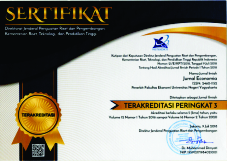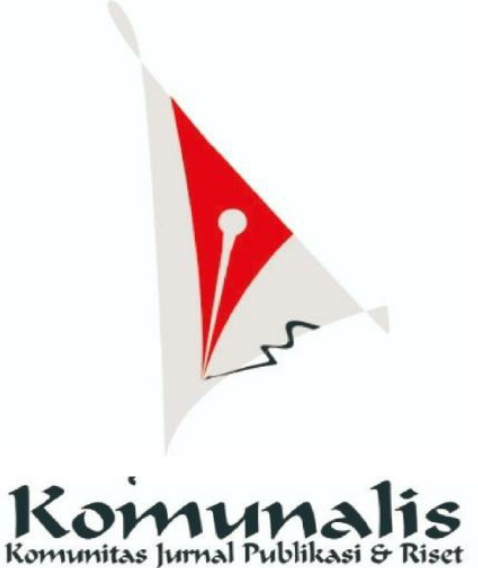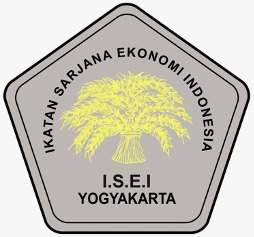Determinants of Current Account Balance in ASEAN+6
DOI:
https://doi.org/10.21831/economia.v17i2.29043Keywords:
neraca transaksi berjalan, pendekatan elatisitas, pendekatan moneter, pendekatan absorpsi, Generalized Method of MomentAbstract
Abstract: The phenomenon of global current account imbalance has made researchers and policy makers provide more attention on current account issues. This phenomenon is illustrated by the US' current account deficit which continues to increase, while ASEAN+6 reaps a surplus. This study aims to study the factors that affect the aggregate current account in ASEAN+6 that have not been explained by previous studies. Based on the dynamic panel model (GMM) used, it was found that the variables Lagged-current account, ToT, Exchange Rate Stability, and Household Consumption have a significant effect on the aggregate current account in ASEAN+6. On the other hand, the REER and Government Expenditures do not have a significant effect on the ASEAN+6 current account. The benefit of this research is that it can be used for the formulation of current account policies to minimize the government's efforts to overcome a bigger issue: imbalance in balance of payment.Keywords: Current account balance, Generalized Method of Moment, ASEAN+6
Determinan Neraca Transaksi Berjalan di ASEAN+6
Abstrak: Fenomena ketidakseimbangan transaksi berjalan global telah membuat para peneliti dan pembuat kebijakan memberikan perhatian lebih pada masalah transaksi berjalan. Fenomena ini tergambar dari defisit transaksi berjalan AS yang terus meningkat, sedangkan ASEAN+6 menuai surplus. Penelitian ini bertujuan untuk mempelajari faktor-faktor yang mempengaruhi neraca transaksi berjalan agregat di ASEAN+6 yang belum dijelaskan oleh penelitian-penelitian sebelumnya. Berdasarkan model panel dinamis (GMM) yang digunakan, ditemukan bahwa variabel Lagged-current account, ToT, Exchange Rate Stability, dan Household Consumption berpengaruh signifikan terhadap agregat current account di ASEAN+6. Di sisi lain, REER dan Belanja Pemerintah tidak berpengaruh signifikan terhadap transaksi berjalan ASEAN+6. Manfaat dari penelitian ini adalah dapat digunakan untuk perumusan kebijakan transaksi berjalan untuk meminimalkan upaya pemerintah mengatasi masalah yang lebih besar: ketidakseimbangan neraca pembayaran.
Kata kunci: Neraca transaksi berjalan, Generalized Method of Moment, ASEAN+6
References
Aizenman, J., Chinn, M., & Ito, H. (2010). The Trilemma Indexes. Retrieved February 5, 2019, from http://web.pdx.edu/~ito/trilemma_indexes.htm
Aristovnik, A. (2008). Short-Term Determinants of Current Account Deficits: Evidence from Eastern Europe and the Former Soviet Union. Eastern European Economics, 46(1), 24–42. https://doi.org/10.2753/eee0012-8775460102
Baltagi, B. H. (2005). Econometric Analysis of Panel Data (Third). West Sussex: John Wiley & Sons Ltd.
Bitzis, G., Paleologos, J. M., & Papazoglou, C. (2008). The Determinants of the Greek Current Account Deficit: The EMU Experience. Journal of International and Global Economic Studies, 1(1), 105–122. Retrieved from https://pdfs.semanticscholar.org/80da/728a33ce79e23d68e7cbaa8136b22524929d.pdf
Calderón, C., Chong, A., & Zanforlln, L. (2007). Current Account Deficits in Africa: Stylized Facts and Basic Determinants. Economic Development and Cultural Change, 56(1), 191–221. https://doi.org/10.1086/520557
Chinn, M. D., & Prasad, E. S. (2003). Medium-term Determinants of Current Accounts in Industrial and Developing Countries: An Empirical Exploration. Journal of International Economics, 59(1), 47–76. https://doi.org/10.1016/S0022-1996(02)00089-2
Darvas, Z. (2012). Real Effective Exchange Rates for 178 Countries: a New Database. Retrieved from Bruegel website: https://bruegel.org/publications/datasets/real-effective-exchange-rates-for-178-countries-a-new-database/
Das, D. K. (2016). Determinants of Current Account Imbalance in The Global Economy: a Dynamic Panel Analysis. Journal of Economic Structures, 5(1). https://doi.org/10.1186/s40008-016-0039-6
Ditjenppi. (2018). RCEP. Retrieved August 17, 2019, from http://ditjenppi.kemendag.go.id/index.php/berita/detail/ia-cepa-momentum-baru-kemitraan-indonesia-australia
Dumairy. (1996). Perekonomian Indonesia. Jakarta: Erlangga.
Financial Times. (2016). China eliminates subsidies for its exporters _ Financial Times. Retrieved December 6, 2019, from https://www.ft.com/content/4f4d1240-024a-11e6-99cb-83242733f755
Firdaus, M. (2018). Aplikasi Ekonometrika Untuk Data Panel Dan Time Series Data. Bogor: IPB Press.
Gossé, J. B., & Serranito, F. (2014). Long-run Determinants of Current Accounts in OECD Countries: Lessons for Intra-European Imbalances. Economic Modelling, 38, 451–462. https://doi.org/10.1016/j.econmod.2014.01.008
Mangkoesoebroto, G. (2006). Ekonomi Publik (Edisi 3). Yogyakarta: BPPE.
Mankiw, N. G. (2013). Macroeconomics (eight). New York: Worth Publisher.
í–zdamar, G. (2015). Factors Affecting Current Account Balance of Turkey: a Survey With the Cointegrating Regression Analysis. Pressacademia, 4(4), 633–633. https://doi.org/10.17261/pressacademia.2015414533
Pilbeam, K. (2006). International Finance (Third). New York: PALGRAVE MACMILLAN.
Sadiku, L., Fetahi-Vehapi, M., Sadiku, M., & Berisha, N. (2015). The Persistence and Determinants of Current Account Deficit of FYROM: An Empirical Analysis. Procedia Economics and Finance, 33(15), 90–102. https://doi.org/10.1016/s2212-5671(15)01696-2
Salvatore, D. (2013). International Economics. In Journal of Chemical Information and Modeling (11th ed, Vol. 53). https://doi.org/10.1017/CBO9781107415324.004
Svensson, L. E. O., & Razin, A. (1983). The Terms of Trade and the Current Account: The Harberger-Laursen-Metzler Effect. Journal of Political Economy, 91(1), 97–125. https://doi.org/10.1086/261130
The world bank. (2018a). General government final consumption expenditure. https://doi.org/10.1787/9789264075108-table11_1-en
The world bank. (2018b). Households and NPISHs Final consumption expenditure. Retrieved October 30, 2019, from The World Bank website: https://data.worldbank.org/indicator/NE.CON.PRVT.CD?year_high_desc=true
UNCTADstat. (2019a). Current Account Balance. Retrieved February 5, 2019, from https://unctadstat.unctad.org/wds/TableViewer/tableView.aspx
UNCTADstat. (2019b). Terms of Trade. Retrieved February 5, 2019, from https://unctadstat.unctad.org/wds/TableViewer/tableView.aspx
Uneze, E., & Ekor, M. (2012). The Determinants of Current Account Balance in an Oil-Rich Exporting Country: the Case of Nigeria. OPEC Energy Review, 36(4), 456–478. https://doi.org/10.1111/j.1753-0237.2012.00221.x
Universitas Gadjah Mada. (2016). Nilai Tukar – Macroeconomic Dashboard. Retrieved February 5, 2019, from https://macroeconomicdashboard.feb.ugm.ac.id/nilai-tukar/
Yang, L. (2011). An Empirical Analysis of Current Account Determinants in Emerging Asian Economies (No. E2011/10).















